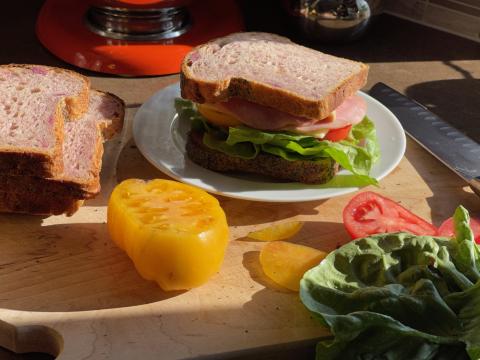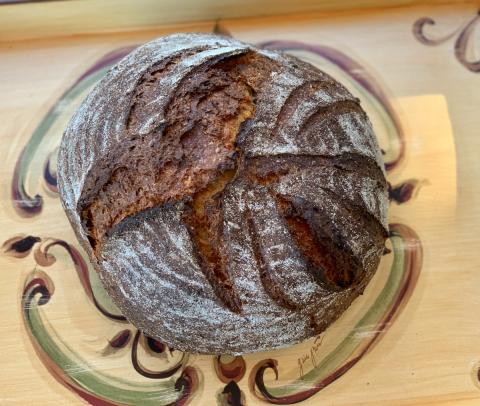I’ve only slightly modified this recipe I saw Kristen post on Instagram. I added a poppyseed crust to the bread because I thought that it would go quite well with the flavour of this bread and I was right. My family did really like the bread and we had some good sandwiches on it.
This was only the 2nd sourdough sandwich loaf I’ve made. And perhaps only my 3rd sandwich loaf ever. My first sourdough sandwich loaf was underproofed and was posted last year on my blog.
This was quite delicious, I love the colour of the crumb which was soft and springy. I’m not sure I like the density around the sides and bottom of the loaf, does anyone know how to fix that? Is this normal?
For my 8.5” x 4.5” pan
Levain build overnight 80ºF
12 g starter + 72 g flour + 40 g water
Morning combine 115 g levain, 250 g water 204 g bread flour, 74 g AP flour and 74 g whole wheat flour.
Mix in mixer low speed for 8 min with dough hook. Rest 45 min covered.
Add in 9.25 g salt and 28 g brown sugar and knead 5 min low speed dough hook.
Then add in, a little at a time, 37 g unsalted room temp butter. Knead until well combined.
Laminate dough on counter and add 111 g mashed steamed purple sweet potatoes.
Slap and fold to combine.
Move to bulk dishes. One coil fold about 1 hour later.
Once doubled, tip out onto floured counter and pat out bubbles.
Shape as a batard, the roll the top of the shaped dough on a wet towel and then onto a cookie sheet covered with poppyseeds. Then place the dough seam side down, seeds up in the loaf pan.
Going on autopilot here, I accidentally placed the dough seam side up, seeds down as you would in a banneton. This was then a challenge to fix and probably compromised the tension of the skin.
Proof covered until dough rises to rim of tins.
Slash with lame, spritz with water and bake.
Preheat oven to 425 for about 30 min, then bake for 25 min at 400. Turn down oven to 350 and bake until browned 35 mins. no steam is used.
Rub the top crust with butter when done and still warm. Let cool in tin for 1 hour then remove and cool on rack until fully cooled before slicing.



























